Related Research Articles
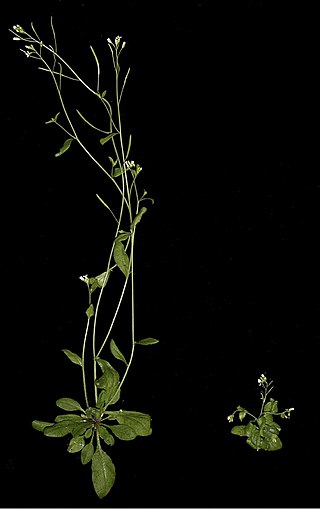
Plant hormones are signal molecules, produced within plants, that occur in extremely low concentrations. Plant hormones control all aspects of plant growth and development, including embryogenesis, the regulation of organ size, pathogen defense, stress tolerance and reproductive development. Unlike in animals each plant cell is capable of producing hormones. Went and Thimann coined the term "phytohormone" and used it in the title of their 1937 book.

Auxins are a class of plant hormones with some morphogen-like characteristics. Auxins play a cardinal role in coordination of many growth and behavioral processes in plant life cycles and are essential for plant body development. The Dutch biologist Frits Warmolt Went first described auxins and their role in plant growth in the 1920s. Kenneth V. Thimann became the first to isolate one of these phytohormones and to determine its chemical structure as indole-3-acetic acid (IAA). Went and Thimann co-authored a book on plant hormones, Phytohormones, in 1937.
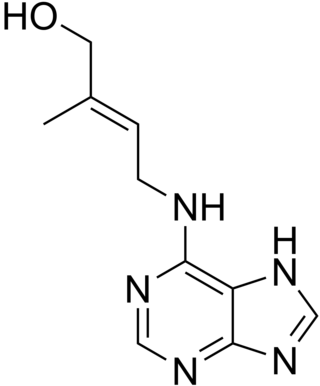
Cytokinins (CK) are a class of plant hormones that promote cell division, or cytokinesis, in plant roots and shoots. They are involved primarily in cell growth and differentiation, but also affect apical dominance, axillary bud growth, and leaf senescence.

Brassinosteroids are a class of polyhydroxysteroids that have been recognized as a sixth class of plant hormones and may have utility as anticancer drugs for treating endocrine-responsive cancers by inducing apoptosis of cancer cells and inhibiting cancerous growth. These brassinosteroids were first explored during the 1970s when Mitchell et al. reported promotion in stem elongation and cell division by the treatment of organic extracts of rapeseed pollen. Brassinolide was the first brassinosteroid to be isolated in 1979, when pollen from Brassica napus was shown to promote stem elongation and cell divisions, and the biologically active molecule was isolated. The yield of brassinosteroids from 230 kg of Brassica napus pollen was only 10 mg. Since their discovery, over 70 BR compounds have been isolated from plants.
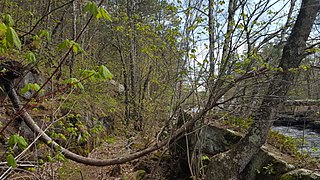
Gravitropism is a coordinated process of differential growth by a plant in response to gravity pulling on it. It also occurs in fungi. Gravity can be either "artificial gravity" or natural gravity. It is a general feature of all higher and many lower plants as well as other organisms. Charles Darwin was one of the first to scientifically document that roots show positive gravitropism and stems show negative gravitropism. That is, roots grow in the direction of gravitational pull and stems grow in the opposite direction. This behavior can be easily demonstrated with any potted plant. When laid onto its side, the growing parts of the stem begin to display negative gravitropism, growing upwards. Herbaceous (non-woody) stems are capable of a degree of actual bending, but most of the redirected movement occurs as a consequence of root or stem growth outside. The mechanism is based on the Cholodny–Went model which was proposed in 1927, and has since been modified. Although the model has been criticized and continues to be refined, it has largely stood the test of time.
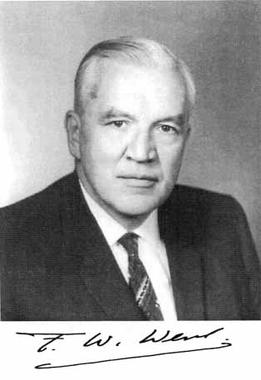
Frits Warmolt Went was a Dutch biologist whose 1928 experiment demonstrated the existence of auxin in plants.
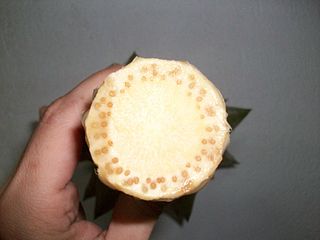
A primordium in embryology, is an organ or tissue in its earliest recognizable stage of development. Cells of the primordium are called primordial cells. A primordium is the simplest set of cells capable of triggering growth of the would-be organ and the initial foundation from which an organ is able to grow. In flowering plants, a floral primordium gives rise to a flower.
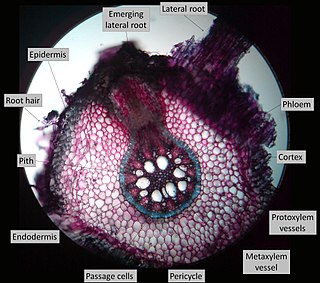
Lateral roots, emerging from the pericycle, extend horizontally from the primary root (radicle) and over time makeup the iconic branching pattern of root systems. They contribute to anchoring the plant securely into the soil, increasing water uptake, and facilitate the extraction of nutrients required for the growth and development of the plant. Lateral roots increase the surface area of a plant's root system and can be found in great abundance in several plant species. In some cases, lateral roots have been found to form symbiotic relationships with rhizobia (bacteria) and mycorrhizae (fungi) found in the soil, to further increase surface area and increase nutrient uptake.
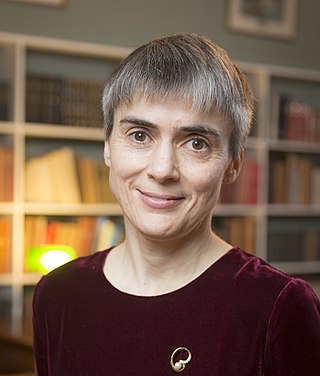
Dame Henrietta Miriam Ottoline Leyser is a British plant biologist and Regius Professor of Botany at the University of Cambridge who is on secondment as CEO of UK Research and Innovation (UKRI). From 2013 to 2020 she was the director of the Sainsbury Laboratory, Cambridge.

In biology, phototropism is the growth of an organism in response to a light stimulus. Phototropism is most often observed in plants, but can also occur in other organisms such as fungi. The cells on the plant that are farthest from the light contain a hormone called auxin that reacts when phototropism occurs. This causes the plant to have elongated cells on the furthest side from the light. Phototropism is one of the many plant tropisms, or movements, which respond to external stimuli. Growth towards a light source is called positive phototropism, while growth away from light is called negative phototropism. Negative phototropism is not to be confused with skototropism, which is defined as the growth towards darkness, whereas negative phototropism can refer to either the growth away from a light source or towards the darkness. Most plant shoots exhibit positive phototropism, and rearrange their chloroplasts in the leaves to maximize photosynthetic energy and promote growth. Some vine shoot tips exhibit negative phototropism, which allows them to grow towards dark, solid objects and climb them. The combination of phototropism and gravitropism allow plants to grow in the correct direction.
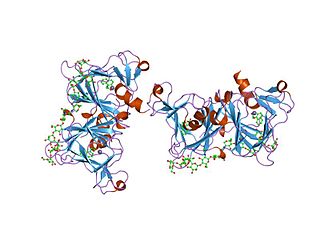
In molecular biology, the auxin binding protein family is a family of proteins which bind the plant hormone auxin. They are located in the lumen of the endoplasmic reticulum (ER). The primary structure of these proteins contains an N-terminal hydrophobic leader sequence of 30-40 amino acids, which could represent a signal for translocation of the protein to the ER. The mature protein comprises around 165 residues, and contains a number of potential N-glycosylation sites. In vitro transport studies have demonstrated co-translational glycosylation. Retention within the lumen of the ER correlates with an additional signal located at the C terminus, represented by the sequence Lys-Asp-Glu-Leu, known to be responsible for preventing secretion of proteins from the lumen of the ER in eukaryotic cells.
Alan M. Jones is an American cell biologist. He is Kenan Distinguished Professor of Biology at the University of North Carolina at Chapel Hill and has a joint appointment with the Department of Pharmacology in the UNC School of Medicine. He is a past President of the American Society of Plant Biologists. He is a Fellow of The American Association for the Advancement of Science, Fellow of American Society of Plant Biologists, and an Alexander von Humboldt Fellow.
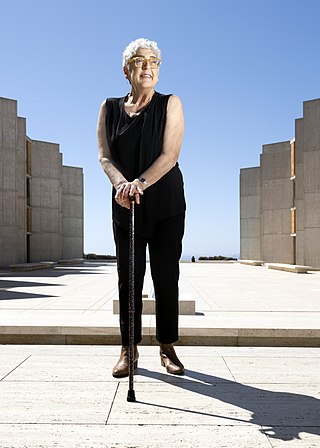
Joanne Chory is an American plant biologist and geneticist. Chory is a professor and director of the Plant Molecular and Cellular Biology Laboratory, at the Salk Institute for Biological Studies and an investigator of the Howard Hughes Medical Institute.
PIN proteins are integral membrane proteins in plants that transport the anionic form of the hormone auxin across membranes. The discovery of the initial member of the PIN gene family, PIN1, occurred through the identification of the pin-formed1 (pin1) mutation in Arabidopsis thaliana. This mutation led to a stem that lacked almost all organs, including leaves and flowers.
Arabidopsis thaliana is a first class model organism and the single most important species for fundamental research in plant molecular genetics.
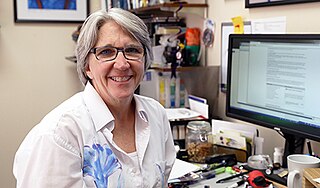
Sarah Wyatt is an American, plant molecular biologist. She is a Professor in the Department of Environmental and Plant Biology at Ohio University, as well as director of the Ohio University Interdisciplinary Graduate Program in Molecular and Cellular Biology. Wyatt's research interests include molecular biology, genomics, and signaling events. She is considered one of the world's experts on gravitational signaling in plants, and some of her recent research includes an experiment on board the International Space Station (ISS).
Keiko Torii is a Japanese plant scientist and academic teaching at the University of Texas at Austin as of September 2019.
Joy Michele Bergelson is an American evolutionary biologist. She is currently the Dorothy Schiff Professor of Genomics at New York University. Bergelson was previously and James D. Watson Distinguished Service Professor of Ecology and Evolution at the University of Chicago, where she chaired the department for ecology and evolution. Her research focuses on the evolution and ecology of plants.
Niko Geldner is a German-Swiss biologist specialised in the study of Plant Cell and Developmental Biology. He is a full professor and the director of the plant cell biology laboratory at the University of Lausanne.
Stacey Harmer is a chronobiologist whose work centers on the study of circadian rhythms in plants. Her research focuses on the molecular workings of the plant circadian clock and its influences on plant behaviors and physiology. She is a professor in the Department of Plant Biology at the University of California, Davis.
References
- ↑ "Jennifer Nemhauser | UW Biology". www.biology.washington.edu. Retrieved 2021-04-18.
- ↑ Nemhauser, Jennifer L (1993). Isolation and charachterization of the Arabidopsis thaliana LOX1 Promoter (Thesis). OCLC 371031469.
- 1 2 "Reprogramming Cells with Plant-Derived Signaling Pathways". Allen Institute. Retrieved 2022-04-07.
- ↑ "Jennifer L. Nemhauser —BIO-PROTOCOL". bio-protocol.org. Retrieved 2020-10-29.
- ↑ Kaplan, Sarah. "Joanne Chory is using plants to save the planet". Washington Post. Retrieved 2022-04-07.
- ↑ "Jennifer Nemhauser". comscicon.com. Retrieved 2020-10-29.
- ↑ "nemhauser lab". depts.washington.edu. Retrieved 2020-10-28.
- ↑ Burgess, Steven (2019-03-26). "Interviews with synthetic biologists: Professor Jennifer Nemhauser". Plantae. Retrieved 2020-10-29.
- ↑ "Jennifer Nemhauser". www.aiche.org. 2019-05-13. Retrieved 2020-10-29.
- ↑ Russell, Peter J.; Hertz, Paul E.; McMillan, Beverly; Benington, Joel (2020-01-01). Biology: The Dynamic Science. Cengage Learning. p. 882. ISBN 978-0-357-46075-7.
- ↑ "Jennifer Nemhauser". prl.natsci.msu.edu. Archived from the original on 2020-11-01. Retrieved 2020-10-29.
- ↑ Galun, Esra (2010-06-25). Phytohormones And Patterning: The Role Of Hormones In Plant Architecture. World Scientific Publishing Company. pp. 195–196. ISBN 978-981-310-778-6.
- 1 2 Urton, James (2017-01-30). "Artists in the lab: Talk will highlight a creative partnership between art and science". UW News. Retrieved 2022-04-07.
- ↑ Clemans, Gayle (2015-06-21). "Seattle painter turns his award into a gift to Seattle Art Museum". The Seattle Times. Retrieved 2022-04-07.
- ↑ "Jennifer Nemhauser". 500 Queer Scientists. Retrieved 2020-10-28.